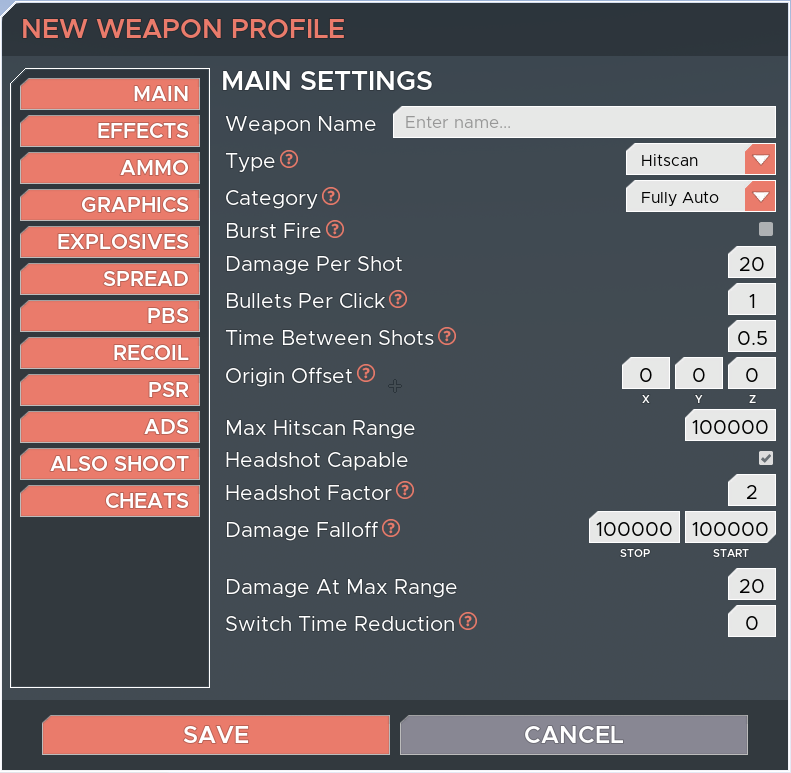While in the scenario editor, you can use the dropdown menus at the top to create a new weapon profile or edit an existing one. Once in the weapon profile editor, it should look something like this:

The tabs on this profile editor are:
- Main - home to important settings like whether the weapon is hitscan or projectile, semi auto or full auto, damage done etc.
- Effects - this is where you can configure unique weapon effects like stunning, aim punching, knocking back etc on hit.
- Charge - if you have Charge enabled in the Main tab, you can configure how it works in this Charge tab.
- Burst - if you have Burst Fire enabled in the Main tab, you can configure how it works in this Burst tab.
- Projectile - if your weapon is selected as a Projectile in the Main tab, you can configure settings like Gravity Scale and Acceleration here in the Projectile tab.
- Ammo - where you can configure ammo settings like magazine size, bullets per shot, reload time etc.
- Graphics - choose what the weapon looks like, and how it behaves visually with settings like muzzle flash, wall impacts, projectile trails etc.
- Explosives - if you want your bullets or rockets to explode, this is where you can choose explosive size, damage etc.
- Spread - where you can set weapon spread (sometimes referred to as bloom).
- PBS - per bullet spread is for weapons like shotguns where bullets spread in a pre-determined pattern.
- Recoil - where you can configure the vertical and horizontal recoil of the weapon.
- PSR - per shot recoil is great for making weapons that have consistent recoil patterns that you see in games like Counter Strike: Global Offensive.
- ADS - if you want the weapon to have aim down sights enabled, this is where you can configure how it works.
- Also Shoot
- Cheats - this is where you can configure a variety of cheats like aimbot or trigger bot for the weapon. Cheats can be enabled or disabled in the Challenge mode properties. They can be freely used in the Free Play mode.